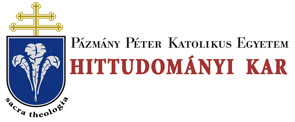Folia Theologica 15. (2004)
Szabolcs Anzelm Szuromi: Rules concerning bishops in the Decretales Pseudo-Isidorianae, especially the regulation on the death of bishops
FOLIA THEOLOGICA 15 (2004) 145 Szabolcs Anzelm SZUROMI RULES CONCERNING BISHOPS IN THE DECRETALES PSEUDO-ISIDORIANAE, ESPECIALLY THE REGULATION ON THE DEATH OF BISHOPS* 'If someone aspires to the bishop's ministry, he is without a doubt looking for a noble task.' (ITim 3,1) This sentence reveals the importance of the bishop's office from the origin of the Church. The hierarchical character is a basic peculiarity of the institutional development of the Church. Jesus Christ entrusted to the apostles the New-testamental Nation of God, and endowed them with sacred power, which has to be executed for the salvation of souls. Therefore, the apostolic authority has resided in the Church from the origin, and its subjects are the bishops.1 The definition of episcopal obligations and rights took a very important place in each epoch of the Church's history, but also the defense of the office or duty of the bishop.2 These rules had guaranteed the independence of the ecclesiastical inner sacred power against the influence of the secular authority, but they also serve the effectual realization of the Church's own goal. The 4th-6th centuries had made an essential effect on the institutional forms of the execution of the bishop's authority. It is no accident that the later, Mediaeval, canonical collections contain the conciliar decisions and papal letters of this epoch. In the Early Middle Ages the political background had changed and the early canonical material was not any longer enough to guarantee the activity of bishops. Therefore, the compilers of the canon * This paper was .presented in the Congress of International Medieval History, Leeds (11th-15tlf July, 2004). 1 ERDŐ, P., Theologie des kanonischen Rechts. Ein systematisch - historischer versuch (Kirchenrechtlicher Bibliothek 1), Münster 1999. 82-106. SZUROMI, Sz.A., The development of the clerical orders up to the discipline of Statuta Ecclesiae Antiqua (5lh Century), in Folia Canonica 5 (2002). 2 Cf. SZUROMI, Sz.A., Megjegyzések a Collectio Canonum Anselmi Lucensis III. könyvének néhány római jogi részletet tartalmazó 90. kánonja kapcsán, in Kánonjog 4 (2002). 79-83.
